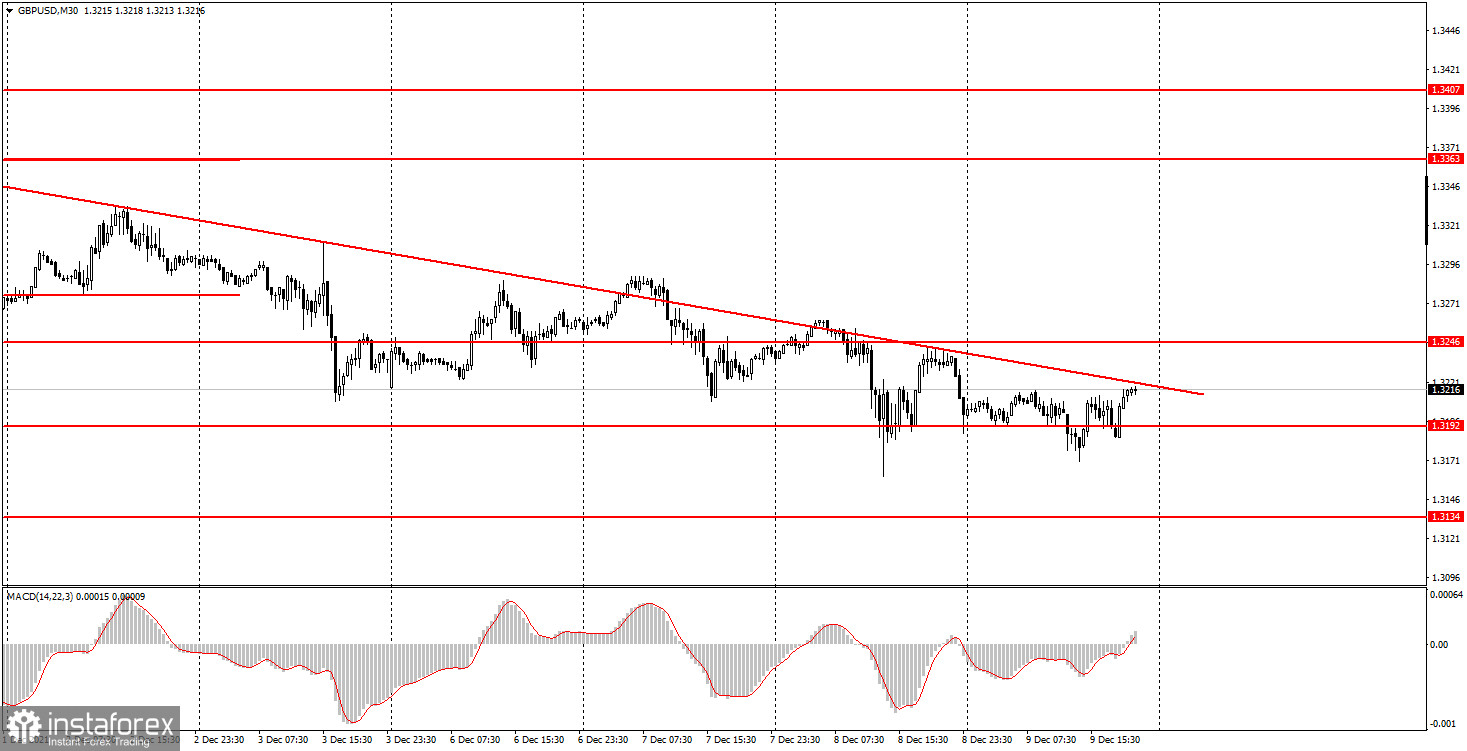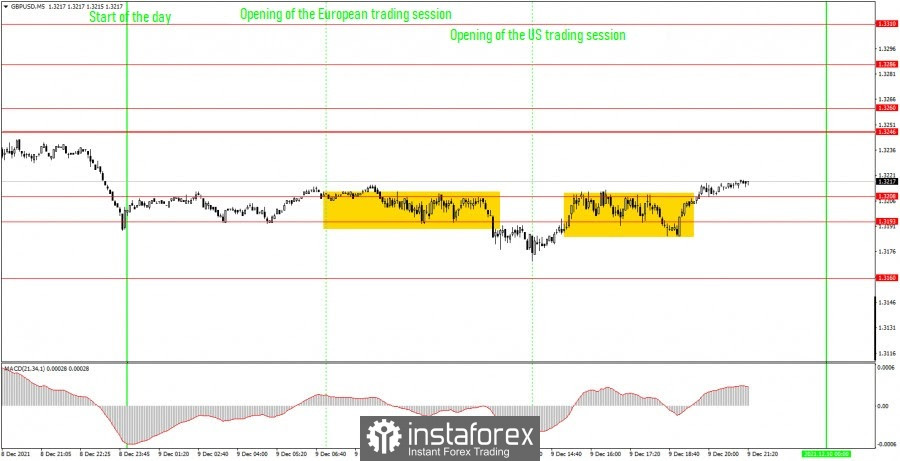Analysis of previous deals:
30M chart of the GBP/USD pair

The GBP/USD pair kept the downward trend again on Thursday! The pair has been trying to overcome the downtrend line for seven consecutive days, retracing it and bouncing from it almost every day, and so far unsuccessfully. Of course, each subsequent attempt increases the chances of a final breakthrough, however, as in the case of the euro/dollar pair, we see that there are practically no bulls on the market now. Consequently, it is in principle very difficult for the British currency to rise in price. The penultimate trading day of the week passed without fundamental events and macroeconomic publications. Thus, a volatility of 50 points is understandable. Tomorrow, both the UK and the US will have important macroeconomic data, so the pair will have to decide on the further direction of movement.
5M chart of the GBP/USD pair

On the 5-minute timeframe, the movement of the pound/dollar pair was almost completely flat on Thursday. We see that the quotes spent most of the day in the 1.3193-1.3208 range, leaving it only occasionally. Thus, it was difficult to rely on a large number of signals, as well as profitable signals when the pair moves sideways. Unfortunately, we did not manage to avoid unprofitable trades either. Although, with a certain train of thought, one could refuse to open any deals. The fact is that the first sell signal was formed for almost the entire European session. Recall that if the levels are close to each other, then they should be considered in a pair, as an area of support or resistance. There are only 15 points between the levels of 1.3193 and 1.3208. Therefore, it was necessary to wait either for consolidation under this area, or above it. As a result, by the beginning of the US trading session, the pair still settled below it, and here novice traders could open short positions. The downward movement did not last long, and the price did not manage to go down even 20 points, so it was not possible to set Stop Loss to breakeven. As a result, the trade closed at a loss of about 15 points when the pair returned to the 1.3193-1.3208 area. All subsequent signals should have been ignored, as it became clear at the US session that the pair was in a flat.
How to trade on Friday:
At this time, on the 30-minute timeframe, the downward trend persists, although at this time it is already completely ambiguous, since the day before yesterday the downtrend line was broken, and the price bounced off it six times already. And tomorrow the seventh may bounce. So today traders can try to overcome it again and change the trend to an upward one. The important levels on the 5 minute timeframe are 1.3160, 1.3193, 1.3208, 1.3246, 1.3260, 1.3286 and 1.3310. We recommend trading on them on Friday. The price can bounce off them or overcome them. As before, we set Take Profit at a distance of 40-50 points. At the 5M TF, you can use all the nearest levels as targets, but then you need to take profit, taking into account the strength of the movement. When passing 20 points in the right direction, we recommend setting Stop Loss to breakeven. The UK will publish reports on industrial production and GDP on December 10. Novice traders should pay attention to them. But more attention should be paid to the report on US inflation in the afternoon. It is more likely to provoke strong movement.
Basic rules of the trading system:
1) The signal strength is calculated by the time it took to form the signal (bounce or overcome the level). The less time it took, the stronger the signal.
2) If two or more deals were opened near a certain level based on false signals (which did not trigger Take Profit or the nearest target level), then all subsequent signals from this level should be ignored.
3) In a flat, any pair can form a lot of false signals or not form them at all. But in any case, at the first signs of a flat, it is better to stop trading.
4) Trade deals are opened in the time period between the beginning of the European session and until the middle of the US one, when all deals must be closed manually.
5) On the 30-minute TF, using signals from the MACD indicator, you can trade only if there is good volatility and a trend, which is confirmed by a trend line or a trend channel.
6) If two levels are located too close to each other (from 5 to 15 points), then they should be considered as an area of support or resistance.
On the chart:
Support and Resistance Levels are the Levels that serve as targets when buying or selling the pair. You can place Take Profit near these levels.
Red lines are the channels or trend lines that display the current trend and show in which direction it is better to trade now.
The MACD indicator consists of a histogram and a signal line. When they cross, this is a signal to enter the market. It is recommended to use this indicator in combination with trend lines (channels and trend lines).
Important speeches and reports (always contained in the news calendar) can greatly influence the movement of a currency pair. Therefore, during their exit, it is recommended to trade as carefully as possible or exit the market in order to avoid a sharp price reversal against the previous movement.
Beginners on Forex should remember that not every single trade has to be profitable. The development of a clear strategy and money management are the key to success in trading over a long period of time.





















